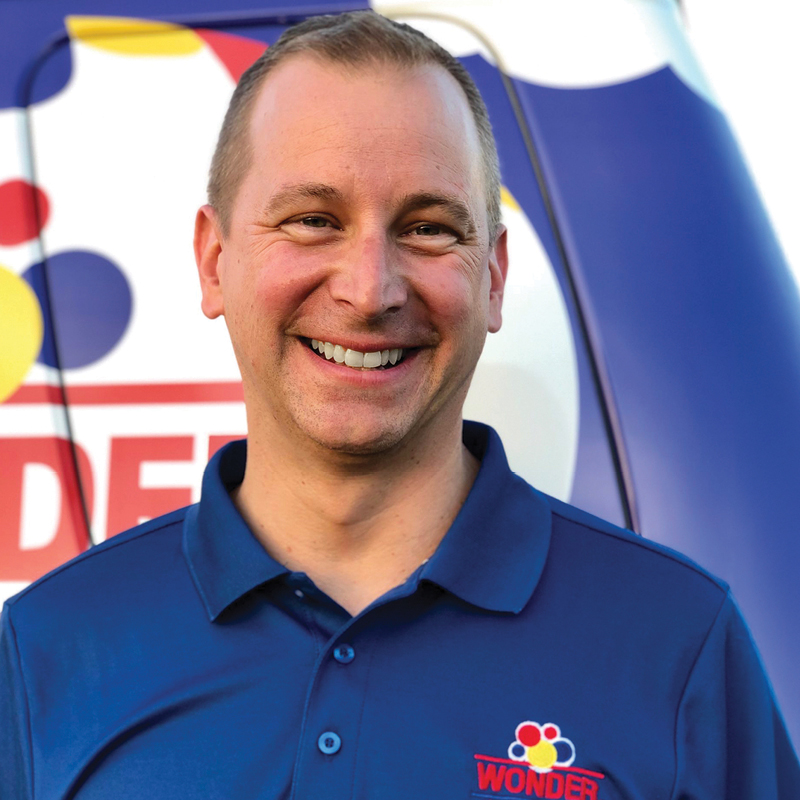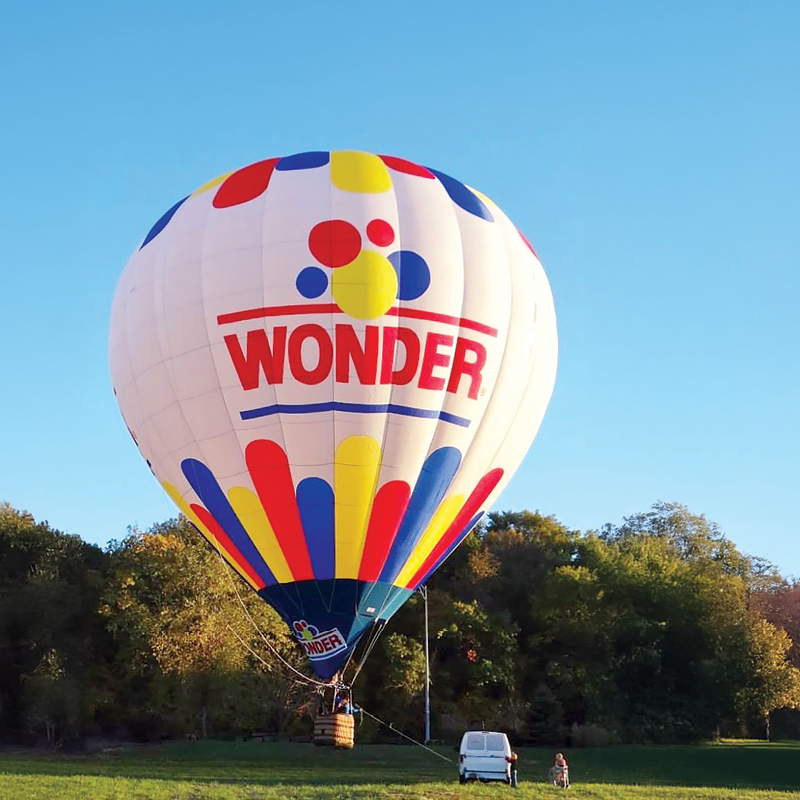Gaining New Perspectives as a Hot-Air Balloonist
By John Perkinson, Senior Staff Writer

Capt. Chris Sabia (PSA) has been the owner of Kansas City Aerosports since 1997.
Capt. Chris Sabia (PSA), his pilot group’s Master Executive Council vice chair, has embraced another way of slipping “the surly bonds of Earth.” When he’s not piloting a Bombardier CRJ700 for his airline, he’s flying a hot-air balloon. “It’s like floating on a cloud, sailing without the waves. There's no sensation of movement or vibration,” Sabia remarked.
The ALPA member is the owner of Kansas City Aerosports, offering branding and marketing opportunities, sales and training events, and passenger joyrides. The business operates from the organization’s base in Kansas City, Mo., and maintains a fleet of five balloons. Per the company’s website, it’s been “uplifting corporate brands, community events, and special celebrations since 1997.”
Once the balloon equipment reaches its point of departure and the necessary logistical decisions have been made, Sabia noted that his transports can be airborne in about 10 minutes. All that’s required is anchoring the passenger basket and igniting the burner to fill the balloon with hot air.
Wind speed, direction, precipitation, temperature, humidity, and weather systems moving within at least a 100-mile radius are all considerations in the decision-making process. “If thunderstorms are predicted or the wind is supposed to change, we’re not going to fly,” he emphasized.
This lofty enterprise is probably best known for its Wonder Bread® balloon, a Cameron Z-70 that, once expanded, covers 70,000 cubic feet. “Wonder Bread learned about my organization while I was doing a weather segment for a Kansas City television news program,” Sabia said.
Kansas City Aerosports has been sporting the Wonder Bread livery since 2002. The Wonder Bread balloon travels to about 17 to 18 cities a year from May until October, participating in events ranging from the Tulsa International Balloon Festival in Tulsa, Okla., to the Up, Up & Away Florida Hot Air Balloon Festival in Lakeland, Fla. At some locations, the balloon, from its elevated perspective, may be asked to provide a static live stream.

Since 2002, Kansas City Aerosports has been sporting the Wonder Bread® livery.
In addition to Wonder Bread, Kansas City Aerosports clients have included Bass Pro Shops®, Phillips 66®, REMAX®, Coca-Cola®, Kellogg’s®, and other corporations and organizations.
Sabia became fascinated with flying at age six. He flew with his family from Providence, R.I., to Pittsburgh, Pa., to search for a new home in preparation for a move. “As soon as we boarded the plane, I knew right then that that’s what I wanted to do for a living,” he said.
Seven years later, Sabia developed an interest in ballooning when he and his parents went for a ride. He earned his commercial pilot’s certificate in lighter-than-air aircraft in 1997. “Keep in mind that balloons are federally registered. And like an aircraft pilot, you have to have so many hours of flight time in type,” he observed. “You periodically go for checkrides, you have to abide by VFR rules, and you have to communicate with airport towers if you travel through their airspace.”
Accordingly, balloons must comply with airworthiness standards for the issuance of type certificates as outlined in FAA 14 CFR Part 31. In addition, balloon-ride operations must be conducted within the operating and flight rules delineated in Part 91. Riders must be 12 years of age or older, able to climb in and out of the basket, and hold onto the side rails as needed throughout the flight.
“A passenger flight is generally an hour, depending on conditions,” Sabia said. “However, the entire excursion, from meeting to packing up and our landing ceremony, can take up to three hours.” Most flights rarely exceed an altitude of 2,000 feet to give passengers a better view of the area below. Hot-air balloons travel with the wind’s direction and speed. Therefore, if the wind speed is 5 mph, the balloon will likely cover 5 miles within an hour.
Since wind determines the direction of the balloon, planning for trips requires a reverse approach to reach a given destination. “If we want to go to a particular space, we have to work backwards on a flight plan to determine the location from where we’ll want to take off,” explained Sabia.
“What I enjoy most about hot-air ballooning are the people I meet and the smiles that ballooning brings to their faces,” Sabia remarked. “It doesn’t matter if you’re a little kid or a big one, when somebody sees a hot-air balloon, they just love it.”

